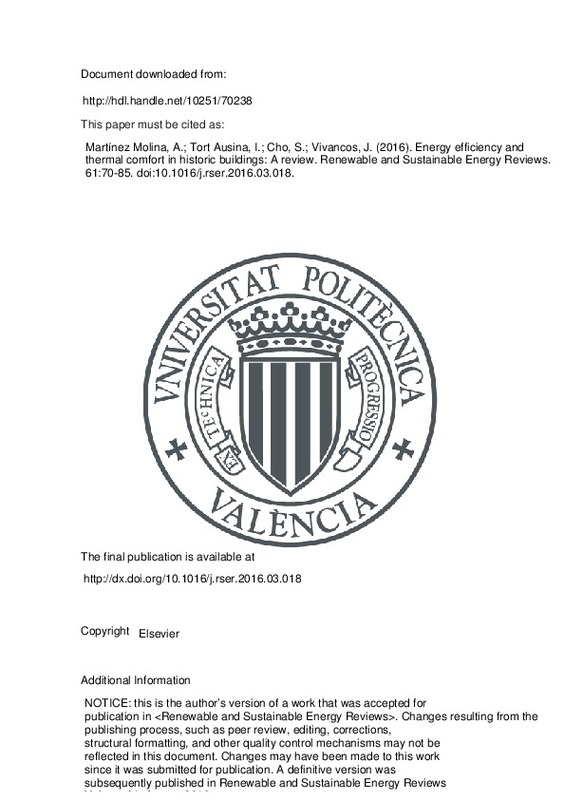JavaScript is disabled for your browser. Some features of this site may not work without it.
Buscar en RiuNet
Listar
Mi cuenta
Estadísticas
Ayuda RiuNet
Admin. UPV
Energy efficiency and thermal comfort in historic buildings: A review
Mostrar el registro completo del ítem
Martínez Molina, A.; Tort Ausina, I.; Cho, S.; Vivancos, J. (2016). Energy efficiency and thermal comfort in historic buildings: A review. Renewable and Sustainable Energy Reviews. 61:70-85. doi:10.1016/j.rser.2016.03.018
Por favor, use este identificador para citar o enlazar este ítem: http://hdl.handle.net/10251/70238
Ficheros en el ítem
Metadatos del ítem
| Título: | Energy efficiency and thermal comfort in historic buildings: A review | |
| Autor: | Martínez Molina, Antonio Cho, Soolyeon Vivancos, José-Luis | |
| Entidad UPV: |
|
|
| Fecha difusión: |
|
|
| Resumen: |
[EN] In recent years, energy efficiency and thermal comfort in historic buildings have become high-interest topics among scholars. Research has demonstrated that retrofitting buildings to current energy efficiency and ...[+]
|
|
| Palabras clave: |
|
|
| Derechos de uso: | Reserva de todos los derechos | |
| Fuente: |
|
|
| DOI: |
|
|
| Editorial: |
|
|
| Versión del editor: | http://dx.doi.org/10.1016/j.rser.2016.03.018 | |
| Descripción: |
|
|
| Agradecimientos: |
|
|
| Tipo: |
|







![[Cerrado]](/themes/UPV/images/candado.png)


